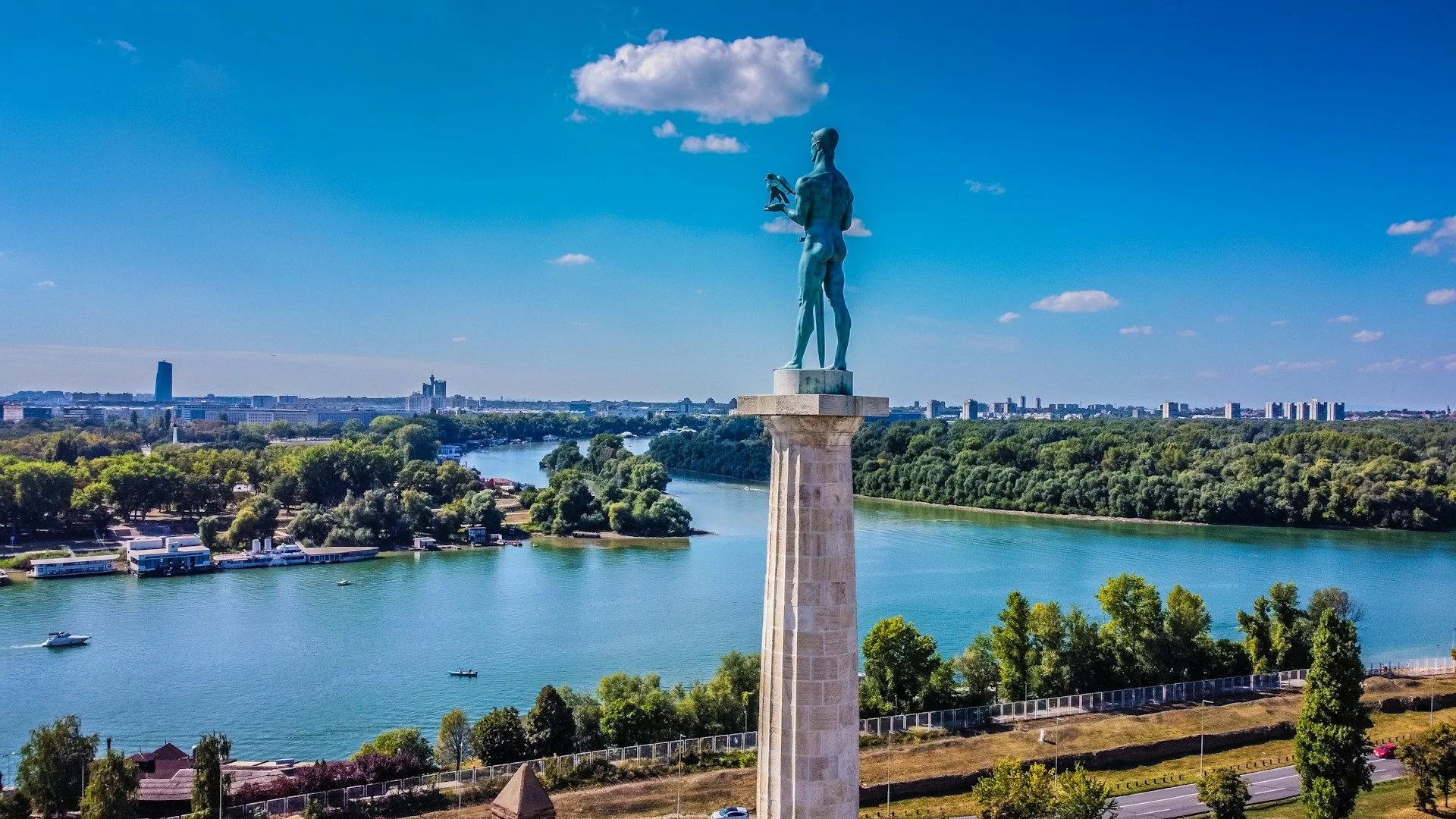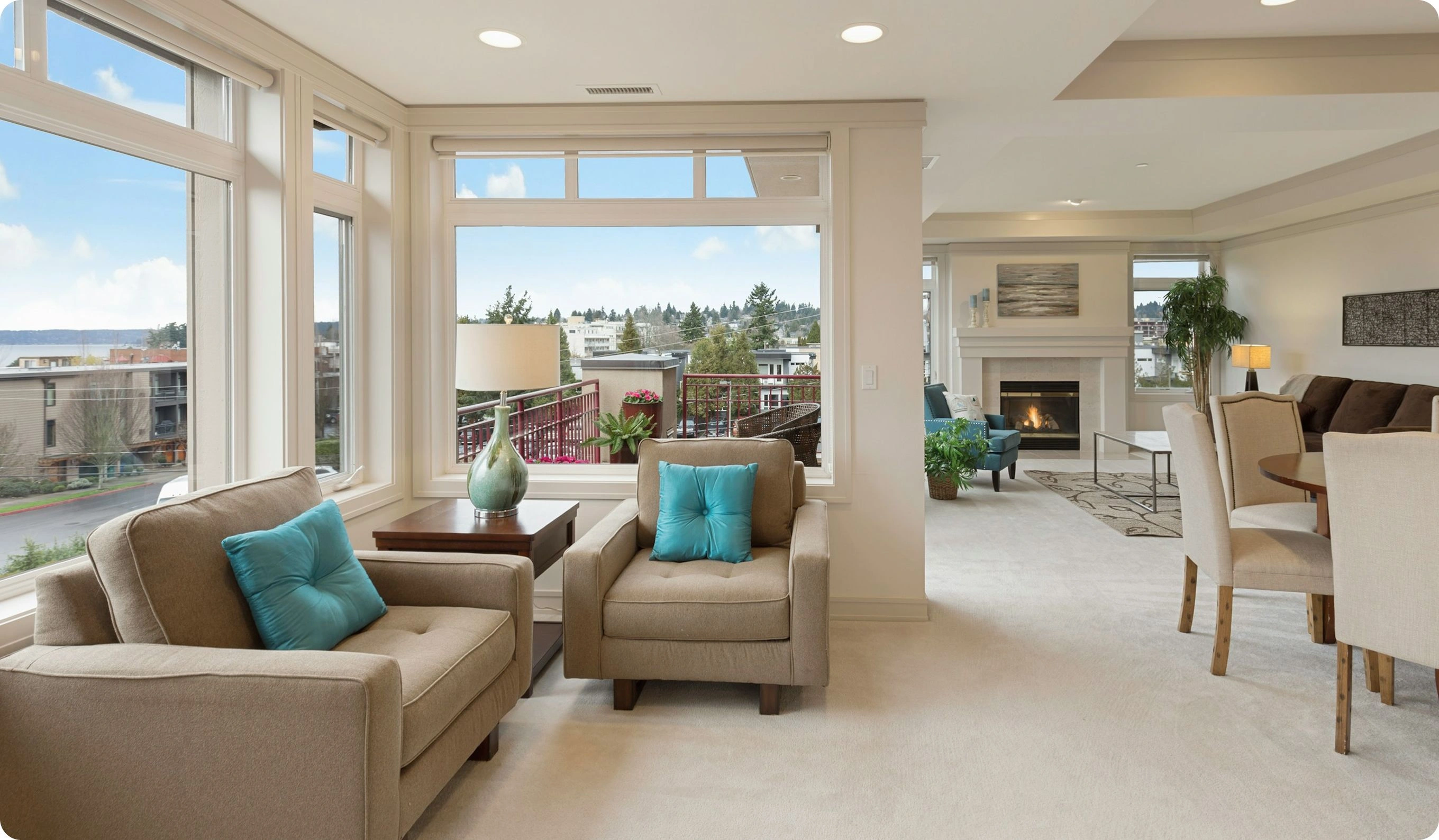Commercial Property Listings in Serbia – Investment OpportunitiesHousing, investment andrelocation with low barriers

Best offers
in Serbia
Benefits of investment in
Serbia real estate
Full Market Access for Foreign Buyers
Foreigners can purchase residential, commercial properties, and land under the same conditions as locals.
European Lifestyle Without EU Prices
Serbia offers European-style architecture, infrastructure, and services — at a much lower cost.
Investment with Fast Residency Option
Property purchase allows easy and fast access to Serbian residency, with integration into the broader European region.
Full Market Access for Foreign Buyers
Foreigners can purchase residential, commercial properties, and land under the same conditions as locals.
European Lifestyle Without EU Prices
Serbia offers European-style architecture, infrastructure, and services — at a much lower cost.
Investment with Fast Residency Option
Property purchase allows easy and fast access to Serbian residency, with integration into the broader European region.

Useful articles
and recommendations from experts
Buy Commercial Property in Serbia: Europe’s Emerging Balkan Business Hub
Serbia, located at the crossroads of Southeast and Central Europe, is steadily earning recognition as a prime location for international real estate investments. Despite its smaller footprint compared to larger European markets, Serbia’s strategic position, evolving economy, and drive toward EU membership mark it as a rising star in the region. Investors eager to buy commercial property in Serbia encounter an intriguing mix of modern urban centers, cost-effective property prices, and a government keen on attracting foreign capital—particularly into the corporate and tech spheres.
Adding to this appeal is Serbia’s status as an emerging EU candidate market, underlined by pro-business reforms and infrastructural upgrades. Whether you are interested in commercial property for sale in Serbia to open a retail complex, modern office space, or a mixed-use development, the nation offers robust potential for both short-term rental yields and longer-term capital gains. While Belgrade remains the focal point of many international investors, secondary cities such as Novi Sad and Niš are also blossoming into attractive targets—driven by local business growth and a supportive environment for startups.
Serbian Real Estate Investments: Key Growth Drivers
Serbia’s real estate landscape has grown more sophisticated in the last decade, influenced by foreign direct investment, urban redevelopment, and government-led incentives to stimulate the property market. For those considering Serbian real estate investments, several core factors underlie the sector’s momentum:
1. Balkan Business Hub
Positioned at the confluence of major European transit corridors, Serbia functions as a gateway to both Eastern and Western markets. Improved highways, rail links, and Danube River access support trade and logistics ventures—spurring demand for modern commercial facilities. Multinational companies often use Serbia as a distribution or manufacturing center, generating a consistent need for warehouses, office blocks, and service complexes.
2. Emerging EU Candidate Market
Serbia’s ongoing efforts to align its regulations with EU norms not only enhance political stability but also bring transparency to business dealings. Over time, this alignment reduces investor risks through standardized legal frameworks. As Serbia pushes for EU membership, it benefits from targeted EU funding and partnership programs, which can positively affect property values in key cities.
3. Competitive Property Prices
While prices in cities like Belgrade have edged upward, Serbia as a whole remains more affordable than many other European capitals and regional peers. This pricing gap can translate into higher returns when factoring in robust tenant demand, especially in urban centers with growing tech industries or manufacturing clusters. Investors looking for deals in emerging neighborhoods can capitalize on still-moderate price points before surging interest drives values higher.
4. Favorable Tax Incentives
Serbia has introduced tax breaks and other incentives to attract foreign capital. Policies such as reduced corporate tax rates or relief on capital gains for certain real estate projects can significantly bolster net returns. Pairing these measures with well-located commercial assets can amplify rental yield and long-term profitability.
Buy Office Space in Belgrade: The Capital’s Corporate Core
Belgrade stands at the forefront of Serbia’s economic transformation, serving as the nation’s political seat, cultural hub, and financial powerhouse. For those keen to buy office space in Belgrade, the capital city offers an evolving skyline, lively business districts, and a reservoir of educated talent:
1. Growing IT Sector in Belgrade
An essential driver of office demand is Serbia’s burgeoning technology industry, notably concentrated in Belgrade. Global tech giants and ambitious startups alike recruit local programmers, designers, and data specialists. This growing IT sector in Belgrade underscores the appetite for modern office facilities with high-speed internet, flexible floor plans, and top-notch employee amenities. Buyers who tailor buildings to these digital-age tenants can often command premium rental rates.
2. Central Business Districts
Areas around the city center—such as New Belgrade (Novi Beograd) across the Sava River—are hotspots for corporate headquarters, international banks, and large-scale retail complexes. Competitive lease terms, proximity to government institutions, and direct highway or airport access all reinforce demand. Mixed-use developments combining residential, commercial, and leisure units further appeal to modern workers seeking live-work-play environments.
3. Redevelopment and Modernization
Belgrade’s authorities actively promote urban renewal projects, transforming former industrial zones into sleek business parks and converting historical buildings into chic offices. Early movers who identify these transitional areas often secure attractive entry prices and see rapid appreciation as infrastructure and tenant mix improve.
4. Tenant Diversity
Beyond the IT sector, Belgrade hosts a diversified roster of corporations spanning finance, telecom, and professional services. This industry spread mitigates risks tied to a single economic segment. Coupled with Serbia’s pivot toward attracting global enterprises, Belgrade office owners can hedge against unexpected market downturns by tapping multiple tenant categories.
Serbia Commercial Real Estate Market: Trends and Hotspots
Beyond Belgrade’s prominence, the Serbia commercial real estate market teems with secondary cities and niche sectors ripe for exploration. Investors open to venturing beyond the capital may discover unique advantages:
1. Secondary City Growth
Novi Sad, Niš, and Kragujevac have each seen surges in new business registrations, higher education expansions, and cultural events. When companies establish branches in these municipalities, they spark demand for modern offices, retail complexes, and co-working spaces. Property values in second-tier cities generally remain below Belgrade, offering a cost-effective entry point with substantial upside.
2. Manufacturing and Logistics
As Serbia cements its role as a Balkan business hub, foreign manufacturers set up production lines in or near major transit routes. This fosters steady demand for warehouses, distribution centers, and commercial facilities around the country’s industrial corridors. Proximity to highways and rail junctions is crucial, reducing transport costs and speeding supply chain logistics.
3. Retail and Mixed-Use Projects
An expanding middle class in Serbia’s urban areas supports new shopping centers, especially in Belgrade or other bustling cities. High-traffic retail locations integrated with residential and leisure components create steady footfall, attracting international franchises and local boutiques. For investors seeking stable rents, well-designed mixed-use complexes with strong anchor tenants can deliver robust returns.
4. Tourism and Hospitality
While Serbia may be less known for tourism compared to some Balkan neighbors, cities like Belgrade attract a growing number of visitors for festivals, historical tours, nightlife, and medical tourism. Boutique hotels, serviced apartments, and event venues increasingly lure domestic and international travelers. Commercial assets that cater to this influx—such as small-scale conference centers or specialized wellness retreats—can benefit from a growing tourist economy.
Invest in Serbian Property: Best Practices and Long-Term Potential
To fully harness Serbia’s upward trajectory, prospective investors should approach the market with diligence and foresight:
1. Legal Framework and Partnerships
Despite Serbia’s ongoing EU alignment, local regulations can be intricate. Securing legal counsel who understands Serbian property law and cross-border transactions is essential. Collaborative partnerships with reputable real estate agencies or joint ventures with established local firms can streamline navigation through bureaucratic steps and regional variations.
2. Financing and Incentives
Some Serbian banks offer mortgage solutions tailored to foreign investors—though rates and terms can vary. Take full advantage of the favorable tax incentives introduced to lure capital, including reduced corporate taxes or exemptions on specific project types. Detailed financial projections help ensure stable cash flow and realistic return targets.
3. Market Research and Due Diligence
Identifying which city or sector to enter depends on your risk tolerance, investment horizon, and expertise. Thoroughly vet each location’s tenant mix, infrastructure projects, and municipal development agendas. For instance, if focusing on the growing IT sector in Belgrade, confirm adequate broadband coverage and building facilities aligned with modern tech demands.
4. Longevity and Exit Strategy
Serbia’s real estate sector, while flourishing, remains vulnerable to shifts in EU accession progress and global economic tides. Balancing short-term rental gains with a longer outlook—perhaps 5 to 10 years—often yields the most stable returns. If seeking an eventual exit, plan your timeline around potential EU membership updates, new transport links, or the finalization of major commercial projects that may boost resale value.
Serbia Commercial Future: Seizing the Balkan Boom
As Western Europe’s property landscape grows more saturated and expensive, Serbia serves as a refreshing alternative, sustained by its position as a Balkan business hub. Buy office space in Belgrade to tap the city’s growing IT sector, or explore second-tier locales where competitive property prices converge with blossoming local economies. By scrutinizing infrastructure trends, forging reliable local partnerships, and capitalizing on favorable tax incentives, investors can secure footholds in the Serbia commercial real estate market that appreciate over time.
While Serbia’s EU journey adds an element of unpredictability, it also underscores the nation’s readiness to meet international standards—a boon for risk-averse financiers. As Serbia refines its regulatory frameworks, modernizes key sectors, and welcomes foreign enterprises, those who invest in Serbian property stand to benefit from a blend of near-term growth and enduring potential. If you’re seeking an up-and-coming opportunity in Southeast Europe, Serbia might just offer the mix of location, affordability, and ambition to elevate your commercial real estate portfolio.
